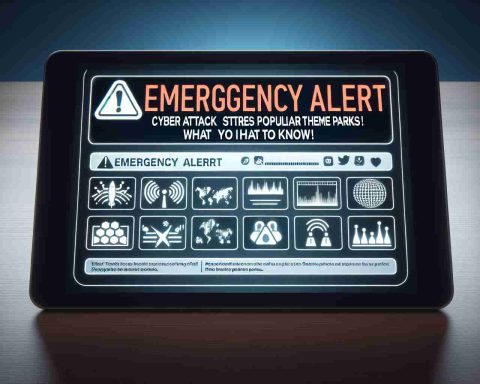Implementing Artificial Intelligence in Disaster Risk Assessment
Embracing the use of cutting-edge technology, experts are now utilizing artificial intelligence to enhance disaster preparedness. The innovative approach involves systems like the AFAD Earthquake Pre-Damage and Loss Estimation System (AFAD-RED), which leverages AI to predict potential damages and casualties in the event of an earthquake.
Enhancing Early Warning Systems
Drawing inspiration from Japan, where post-earthquake warnings are disseminated through speakers and announcement systems, stakeholders are considering similar early warning systems to be implemented globally. Promoting awareness, these systems serve as crucial tools in alerting communities about imminent risks and promoting timely responses.
Encouraging Technological Advancements and Social Preparedness
Recognizing the importance of technological advancements in disaster management, authorities stress the significance of integrating advanced construction techniques and fostering sociological readiness. By encouraging a culture of safety and preparedness, societies can better mitigate risks associated with natural disasters.
Building Resilience through Urban Renewal
Highlighting the significance of urban transformation initiatives in regions like Istanbul and the Marmara Basin, officials emphasize the need to support such endeavors. These programs, such as those by the Housing Development Administration of Turkey (TOKI), play a pivotal role in fortifying structures against seismic activities, fostering community resilience.
Driving Innovation in Disaster Preparedness
Emphasizing a proactive approach towards disaster risk reduction, stakeholders across various sectors are encouraged to adopt a risk-centric mindset. Through collaboration among governmental bodies, local administrations, academic institutions, and civil society organizations, efforts are being channeled towards building a resilient future.
Securing Industrial Continuity in Critical Zones
Recognizing Marmara as a vital industrial hub with global significance, the focus shifts towards ensuring the sustainability of industrial facilities in the face of potential disasters. By developing business continuity plans tailored to the unique needs of industrial sectors, authorities aim to safeguard production capabilities even during crises.
By embracing technological advancements, fostering community awareness, and prioritizing resilience-building initiatives, societies can enhance their preparedness for unforeseen challenges, ultimately paving the way for a safer and more secure future.
Utilizing Geospatial Technology for Disaster Risk Mapping
Taking disaster preparedness to the next level, experts are now harnessing the power of geospatial technology for comprehensive disaster risk mapping. Through the integration of satellite imagery, Geographic Information Systems (GIS), and remote sensing data, stakeholders can create detailed risk maps that highlight vulnerable areas prone to specific hazards, allowing for targeted mitigation strategies.
Key Questions and Answers:
1. How can geospatial technology improve disaster preparedness?
Geospatial technology provides accurate data on hazard-prone areas, enabling authorities to make informed decisions regarding infrastructure development, emergency response planning, and resource allocation.
2. What are the challenges associated with geospatial technology in disaster risk mapping?
Challenges include data accuracy and availability, technological infrastructure limitations in certain regions, and the need for continuous updates to ensure the relevance of risk maps over time.
Advantages:
– Precision in identifying high-risk areas.
– Enhanced visualization for better decision-making.
– Facilitation of targeted risk reduction measures.
Disadvantages:
– Initial investment costs for technology implementation.
– Dependence on reliable data sources and maintenance.
– Technical expertise required for data interpretation.
By incorporating geospatial technology into disaster preparedness strategies, communities can proactively identify vulnerabilities and implement measures to reduce the impact of disasters.
Suggested related link for further information: GIS Lounge















